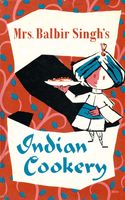Advertisement
About Indian Cookery
Appears in
Published 1961
Indian cookery really needs no introduction. It is famous the world over and enjoys a reputation matched only by the French and the Chinese. Indian food has an uncanny charm and those who once taste Indian food find that all other food is insipid and tasteless in comparison.
It is the spices, whose use dates to the pre-Aryan period, which are responsible for these superb preparations. It was in fact the lure of these spices which first brought the British and the French, the Dutch and the Portuguese to the Indian coast, and the very spices which were the pride of India were responsible for its subjugation. The use of spices does not mean their use in bulk. It does not indicate, as those uninitiated to the glories of Indian food are prone to believe, that Indian food is necessarily acrid and searing. No doubt in this vast subcontinent there will be found several people who revel in taking highly spiced dishes, but there are others who can stand nothing but a bland dish and contrary to popular belief Indian food is just as tasty when it is bland as when it is hot. The extent to which a dish need be spiced is not rigid. It is a matter of personal taste and can be varied accordingly. The excessive use of spices has probably been fostered by various restaurants and eating houses both inside and outside India who camouflage with the help of spices the flavour of a dish which they are unable to produce properly. The art of Indian cookery lies not in high spicing but in the delicacy of spicing. It is the use of selected spices in a particular manner to bring out the dormant flavours of a dish or to drown the undesirable ones which is the real art. The quantity of spices used by the author in her recipes is moderate and should be suitable for most individuals.

